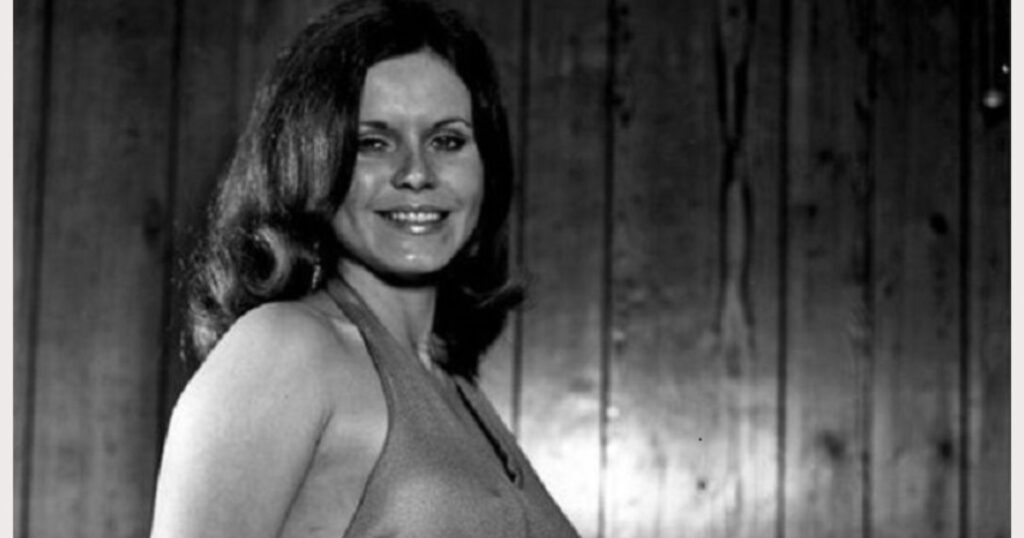Ever wondered about the glitz behind the grit of drag racing? Meet Barbara Roufs, the queen who ruled the strip in the 1970s. Her story isn’t just about trophies and cheering crowds – it’s a rollercoaster of triumph and tragedy that still echoes in the racing world today.
Who was Barbara Roufs?
Born in 1944 in sun-soaked California, Barbara wasn’t your average girl next door. With a dad who lived for the thrill of motorcycle racing and a mom who ran a beauty salon, she was destined for a life that blended speed and style.
Early Life and Background
Picture this: little Barbara, wide-eyed at the Kearney Bowl, watching her dad Wayne Eldon tear up the track. Meanwhile, her mom Thelma Ruby Riley split her time between styling hair and playing organ at the local church. Talk about a mix of high-octane and high notes!
Growing up in this environment, Barbara developed a unique blend of glamour and grit. The roar of engines and the smell of hairspray were her lullabies, shaping a girl who’d soon turn heads on and off the track.
Career and Achievements
Fast forward to the early ’70s. Barbara, now 29, bursts onto the drag racing scene. While most trophy girls were barely out of their teens, she brought a mature allure that set her apart. Her long, sleek hair and go-go boots became her trademark, catching eyes and hearts alike.
But Barbara wasn’t just a pretty face. She understood the sport, connected with fans, and brought an energy that elevated every event she graced. Her crowning moment? Being named queen of the 6th annual US Professional Dragster Championship at Orange County International Raceway. Talk about a victory lap!
Personal Life
Behind the glamorous facade, Barbara had a life away from the spotlight. She was a wife and a mother to daughter Jet Dougherty. But like many public figures, she kept her private world just that – private. It’s a reminder that even the brightest stars have quiet moments we don’t see.
The Tragic End
Now, here’s where the story takes a dark turn. In January 1991, at just 47, Barbara’s life came to a shocking end. She died by suicide, leaving fans and family reeling. The circumstances? Unclear. The impact? Devastating.
Legacy and Impact
But let’s not let that be the end of Barbara’s story. Her influence on drag racing was seismic. She inspired a generation of women to get involved in motorsports, proving that beauty and brains could coexist in a world of horsepower and grease.
Siblings and Family
Barbara wasn’t alone in her journey. She had siblings – James, Bruce, and Vivian Deaton, plus an adopted brother, Ben Gube. This family unit, with parents Wayne and Thelma at the helm, formed the foundation of Barbara’s world, supporting her as she blazed trails in the racing community.
The Rise of Barbara Roufs
Early Involvement in Drag Racing
Imagine a young Barbara, soaking up the atmosphere at local races. The smell of burning rubber, the roar of engines – it was in her blood from day one. By the early ’70s, she’d found her niche as a trophy girl, but she was so much more than that.
Distinguishing Herself from Others
What set Barbara apart? It wasn’t just her looks – though let’s be real, she was stunning. It was her genuine passion for the sport. At 29, she brought a maturity and understanding that younger trophy girls couldn’t match. Fans and racers alike were drawn to her authentic love for drag racing.
Career Highlights
Barbara’s crowning moment came when she was named queen of the US Professional Dragster Championship. But it wasn’t just about the title. She became a fixture at events, her presence as anticipated as the races themselves. She wasn’t just presenting trophies – she was becoming a legend.
Influence on the Drag Racing Community
Barbara’s impact went beyond her official role. She became a bridge between the fans and the sport, making drag racing more accessible and appealing to a wider audience. Her charisma drew people in, and her knowledge kept them engaged.
Personal Reflections
Those who knew Barbara often speak of her warmth and genuine interest in others. She wasn’t just playing a part – she lived and breathed the racing life. This authenticity is what made her more than just a trophy girl; she was the heart of the drag racing community.
Read Also This; Ashlyn Peaks Age, Career, Family, Net Worth, Height Bio 2024
The Tragic Events
The End of Her Career
As the ’80s rolled in, Barbara’s public appearances became less frequent. The reasons aren’t clear – was it a personal choice? Industry changes? Whatever the case, her gradual retreat from the limelight marked the end of an era in drag racing.
Circumstances of Her Death
January 1991 brought the news no one wanted to hear. Barbara, at just 47, had taken her own life. The details remain shrouded in mystery, leaving fans and loved ones with questions that may never be answered.
Impact on the Drag Racing Community
The news hit the racing world like a shockwave. Barbara wasn’t just a figure from the past – she was a beloved icon. Her death forced the community to confront issues of mental health and the pressures of public life in a way it hadn’t before.
Reflections from Her Daughter
Years later, Barbara’s daughter Jet Dougherty opened up about her mom. She painted a picture of a vibrant, loving woman who was so much more than her public persona. These insights give us a glimpse of the Barbara behind the glamour – a real person with depths we never fully saw.
Remembering Barbara Roufs
In the wake of tragedy, the racing community rallied to honor Barbara’s memory. Stories were shared, tributes were made. It became clear that while she may have left the spotlight, she had never left the hearts of those who knew and admired her.
Lessons from Her Story
Barbara’s story serves as a poignant reminder of the complexities behind public figures. It challenges us to look beyond the surface, to recognize the humanity in our icons, and to be mindful of the pressures that come with life in the public eye.
Read Also About: Barbara Roufs – Death, Burial, Cemetery & Obituaries
Barbara Roufs’ Legacy

Influence on Future Generations
Barbara’s impact didn’t end with her passing. She paved the way for women in motorsports, showing that they could be knowledgeable, passionate, and integral to the sport. Today’s female racers and industry professionals often cite her as an inspiration.
Memorials and Tributes
The drag racing community hasn’t forgotten Barbara. Annual events and races are held in her honor, keeping her memory alive and introducing new generations to her story. These aren’t just about nostalgia – they’re a celebration of her enduring influence.
Inspiration for Women in Motorsports
Barbara’s legacy is particularly powerful for women in racing. She showed that femininity and a love for motorsports weren’t mutually exclusive. Her story continues to inspire women to pursue their passions in traditionally male-dominated fields.
Cultural Impact
Beyond the track, Barbara left her mark on popular culture. Her iconic look – the long hair, the go-go boots – became synonymous with the glamour of 1970s motorsports. Even today, her style is referenced and celebrated in fashion and media.
Personal Insights and Anecdotes
Memories from Family and Friends
Those who knew Barbara personally paint a picture of a woman who was much more than her public image. They recall her infectious laugh, her kindness, and her ability to make everyone feel special. These personal touches humanize the icon, reminding us of the person behind the legend.
Anecdotes from the Racing Community
Racers and crew members have their own stories. Like the time Barbara helped push a stalled car to the starting line, or how she remembered the names of every crew member’s kids. These small acts of kindness and involvement show how deeply she was woven into the fabric of the racing community.
Barbara Roufs’ Personal Philosophy
Barbara often spoke about living life to the fullest and finding joy in every moment. Her approach to life was as fast-paced and vibrant as the sport she loved. She believed in the power of passion and the importance of being true to oneself.
Quotes from Barbara Roufs
“Life’s a drag race – it’s not just about crossing the finish line, it’s about the thrill of the ride.”
This quote, attributed to Barbara, encapsulates her philosophy. It speaks to her love of the sport and her approach to life – embracing every moment with enthusiasm and joy.
Remembering Barbara Roufs
Tributes from Fans and the Racing Community
Decades after her passing, fans still share stories of meeting Barbara at races. They talk about her kindness, her beauty, and how she made every interaction feel special. These tributes keep her memory alive and show the lasting impact she had on individuals.
Impact on Modern Drag Racing Culture
Barbara’s influence can still be seen in modern drag racing. The role of women in the sport, the emphasis on fan interaction, and the blend of glamour and grit all bear her fingerprints. She helped shape the culture of drag racing as we know it today.
Legacy Events and Memorials
Annual races and events dedicated to Barbara’s memory dot the racing calendar. These aren’t just about remembering the past – they’re about inspiring the future, encouraging new generations to embrace the spirit of passion and determination that Barbara embodied.
Personal Reflections
Those who knew Barbara best often reflect on the dichotomy between her public persona and her private self. They remember a woman who was both larger than life and deeply human, someone who could light up a racetrack but also cherished quiet moments with loved ones.
The Enduring Mystery of Barbara Roufs
Unanswered Questions
Despite all we know about Barbara, there remain mysteries. What led to her tragic decision in 1991? How did she navigate the challenges of being a public figure in a male-dominated sport? These questions remind us that even the most public lives have their private struggles.
Speculation and Theories
Over the years, various theories have emerged about Barbara’s life and death. Some speculate about personal troubles, others about the pressures of fame. While we may never know the full truth, these discussions keep her story alive and relevant.
The Impact of Uncertainty
The lingering questions about Barbara’s story serve a purpose. They remind us of the complexity of human life, the challenges faced by public figures, and the importance of compassion and understanding.
Barbara’s Place in Drag Racing History

A Pioneering Figure
Barbara wasn’t just a trophy girl – she was a pioneer. In an era when women’s roles in motorsports were limited, she carved out a space that was uniquely her own. Her influence helped pave the way for greater female involvement in all aspects of racing.
Changing Perceptions
Through her knowledge, passion, and charisma, Barbara helped change perceptions about women in racing. She showed that beauty and brains weren’t mutually exclusive, and that women could be integral to the sport’s appeal and growth.
A Bridge Between Eras
Barbara’s career spanned a transformative time in drag racing. She helped bridge the gap between the sport’s early days and its emergence as a mainstream attraction. Her story is intertwined with the evolution of drag racing itself.
Read Also This: What Is Jelly Bean Brains Real Name? Full Biography 2024
Lessons for Today’s Racing World
Embracing Diversity
Barbara’s story underscores the value of diverse voices and perspectives in motorsports. Today’s racing world continues to grapple with issues of inclusion and representation – Barbara’s legacy offers both inspiration and challenges.
The Human Side of Racing
In an era of high-tech machines and corporate sponsorships, Barbara’s story reminds us of the human element that makes racing special. Her connection with fans and her genuine love for the sport are qualities that remain vital today.
Balancing Glamour and Authenticity
Barbara’s ability to bring glamour to the gritty world of racing, while remaining authentic and approachable, offers lessons for today’s public figures in the sport. It’s a delicate balance that, when struck right, can create lasting connections with fans.
The Ongoing Conversation
Keeping the Discussion Alive
Barbara’s story isn’t just history – it’s an ongoing conversation. New generations discover her legacy, sparking discussions about women in motorsports, mental health in public figures, and the evolution of drag racing culture.
Inspiring New Stories
While we celebrate Barbara’s legacy, her story also inspires us to look for and elevate new voices in the world of racing. Who are today’s trailblazers? How are they shaping the future of the sport?
A Call to Action
Barbara’s tragic end serves as a call to action. It challenges the racing community – and society at large – to be more aware of mental health issues, to support those in the public eye, and to remember the humanity behind the glamour.
FAQ’s
Who was Barbara Roufs?
Barbara Roufs was a celebrated drag racing trophy girl in the 1970s. Born in 1944 in California, she became an icon in motorsports. Her father was a motorcycle racer, influencing her passion for racing. Barbara was known for her beauty, charisma, and deep understanding of drag racing.
What was Barbara Roufs known for?
Barbara was famous for her role as a drag race trophy girl. She stood out for her striking looks and stylish 60s go-go boots. Her presence at races drew large crowds. Barbara was crowned queen of the 6th annual US Professional Dragster Championship. She was known for connecting with fans and racers alike.
How did Barbara Roufs die?
Barbara Roufs died by suicide in January 1991. She was 47 years old at the time. The exact circumstances of her death remain unclear. Her passing shocked the drag racing community. It raised awareness about mental health issues in public figures.
What is Barbara Roufs’ legacy in drag racing?
Barbara’s legacy in drag racing is significant. She inspired more women to get involved in motorsports. Her blend of glamour and knowledge changed perceptions about women in racing. Barbara helped bridge the gap between fans and the sport. Her influence is still felt in modern drag racing culture.
How is Barbara Roufs remembered today?
Barbara is remembered as a drag racing icon. Annual races and events are held in her honor. Fans and racers still share stories about her kindness and enthusiasm. She’s seen as a trailblazer for women in motorsports. Barbara’s style and charisma continue to inspire new generations in racing.
Conclusion
Barbara Roufs was more than a beautiful face at the drag strip. She was a passionate enthusiast, a trailblazer for women in motorsports, and a beloved figure whose influence extends far beyond her time. Her story – with all its triumphs and tragedies – continues to captivate and inspire.
As we remember Barbara, we’re reminded of the power of passion, the complexity of public life, and the enduring impact one person can have on a community. In the world of drag racing and beyond, Barbara Roufs remains a queen – not just for her beauty and charisma, but for her lasting legacy that continues to shape the sport she loved.







